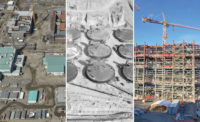This month, Israel is set to open the first stage of a planned 2,000-acre urban park in Tel Aviv on the former site of what has been, for decades, the country's biggest environmental health hazard. Named for the late former prime minister, Ariel Sharon Park will be Israel's largest urban park when the $250-million project is completed in 2020.

Work on the public-private effort involves transforming the Hiriya landfill site and surrounding floodplain into a recreational site. It was built at a height of 60 meters atop a mound of 16 million tons of waste that accumulated until the dump closed in 1998. It still will serve as a transfer point for 3,000 daily tons of waste sent to sites in southern Israel for disposal.
“This is one of the first places anywhere in the world where a huge waste dump is being transformed into a public park,” says Peter Latz, its German designer. The master plan includes open spaces, fields, streams, a lake, a promenade, an amphitheater, cafes and a network of hiking and biking trails.
Rehabilitation began in 2007. “Two streams had to be relocated to stabilize the mountain slopes, which involved moving 10 million cubic meters of soil,” says Danny Sternberg, an Israeli engineer. SCS Engineers, Long Beach, Calif., also advised on soil stability. The mountaintop's plateau includes underground water-retention pools for vegetation and to prevent methane emission and rain seepage. Three industrial plants have been set up on the premises to recycle waste at the sorting center, including a waste-to-energy facility that will sell surplus power to national utility Israel Electric Corp.

